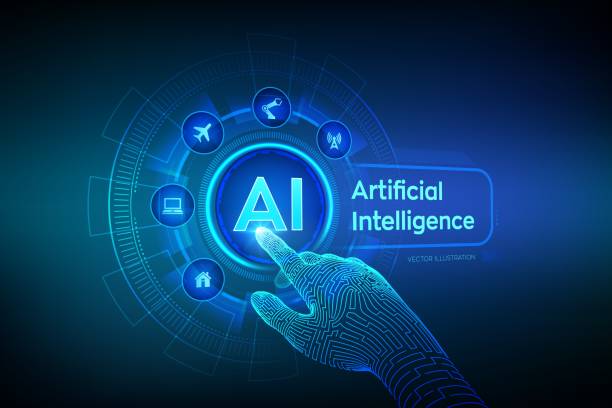What is Artificial Intelligence and what are its Applications?
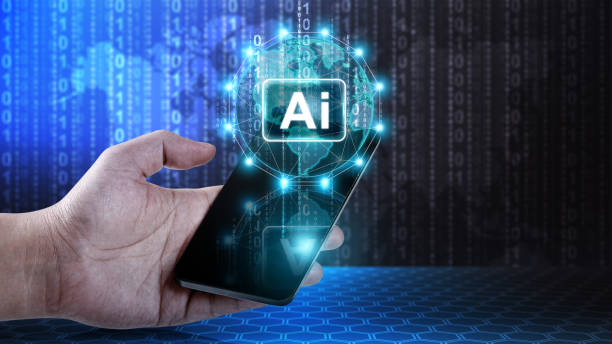
#Artificial_Intelligence or AI is a branch of computer science that deals with building machines that can perform tasks that usually require human intelligence.
This definition includes learning, reasoning, problem-solving, perception, and understanding natural language.
Simply put, artificial intelligence tries to enable computers to think and act like humans.
The applications of artificial intelligence are very broad and diverse.
Some of the most important applications include:
- Self-driving cars (Tesla Autopilot): Artificial intelligence plays a fundamental role in self-driving cars and enables driving without human intervention.
- Facial Recognition and Voice Recognition (Facial Recognition): Artificial intelligence is used for facial recognition in security cameras and voice recognition in voice assistants such as Siri and Alexa.
- Medicine (IBM Watson Health): In the field of medicine, artificial intelligence is used in disease diagnosis, drug development, and the provision of personalized treatments.
- Marketing (Salesforce Marketing Cloud): Artificial intelligence in marketing is used to analyze customer behavior, provide targeted advertising, and improve customer experience.
- Customer Service (Zendesk): Chatbots and virtual assistants powered by artificial intelligence help provide 24/7 customer service.
In general, artificial intelligence is used in any field that requires processing large amounts of data, making quick and accurate decisions, or performing repetitive tasks.
The main goal of developing artificial intelligence is to improve human life and increase productivity in various fields.
As you can see, artificial intelligence is advancing rapidly and is expected to play an even more prominent role in our lives in the future.
Are you tired of having visitors to your online store but no sales? Rasaweb solves your main problem by designing professional online stores!
✅ Dramatic increase in sales with targeted design
✅ Perfect user experience for your customers
⚡ Get a free consultation!
Types of Artificial Intelligence: Categories and Approaches

Artificial intelligence can be categorized based on various criteria.
One of the most common classifications is based on the capabilities of artificial intelligence.
Based on this, artificial intelligence is divided into two main categories:
- Narrow AI (Weak AI): This type of artificial intelligence is only capable of performing a specific task and performs very well in that task.
Most artificial intelligence systems used today are of this type.
Examples of weak AI include facial recognition systems, movie recommendation systems, and chess playing systems. - General AI (Strong AI): This type of artificial intelligence is capable of performing any task that a human can perform.
Strong artificial intelligence is still in the theoretical stage and no strong artificial intelligence system has been built so far.
In addition to categorization based on capabilities, artificial intelligence can also be categorized based on the approaches used.
Some of the common approaches in artificial intelligence include:
- Machine Learning: A method that allows computers to learn from data without being explicitly programmed.
- Neural Networks: Computational models that are inspired by the structure of the human brain and are used to learn patterns and complex relationships in data.
- Natural Language Processing: A branch of artificial intelligence that enables computers to understand and generate human language.
- Fuzzy Logic: A method that allows computers to deal with uncertainty and ambiguity and make logical decisions.
Each of these approaches has its own advantages and disadvantages and is suitable for solving different problems.
Choosing the right approach depends on the nature of the problem and the available data.
In general, artificial intelligence is a vast and diverse field that includes various techniques and approaches and is constantly evolving and developing.
Machine Learning: The Key to Artificial Intelligence

#Machine_Learning is one of the most important subfields of artificial intelligence that enables computers to learn from data without being explicitly programmed.
This learning process is done through various algorithms that allow computers to discover patterns, relationships, and hidden rules in the data.
Machine learning is divided into three main categories:
- Supervised Learning: In this method, the algorithm is trained using labeled data.
Labeled data includes inputs and expected outputs.
The goal of supervised learning is to learn a function that can predict the correct outputs for new inputs. - Unsupervised Learning: In this method, the algorithm is trained using unlabeled data.
The goal of unsupervised learning is to discover patterns and hidden structures in the data. - Reinforcement Learning: In this method, an agent is placed in an interactive environment and learns how to behave by taking different actions and receiving rewards or penalties in order to maximize its reward.
Comparative Table of Machine Learning Types
| Learning Type | Data Type | Goal | Example |
|---|---|---|---|
| Supervised | Labeled | Predict Output | Spam Email Detection |
| Unsupervised | Unlabeled | Discover Pattern | Customer Clustering |
| Reinforcement | Interactive | Maximize Reward | Playing Chess |
Machine learning algorithms are used in a wide range of applications, including image recognition, natural language processing, recommendation systems, fraud detection, and self-driving cars.
DeepMind is a subsidiary of Alphabet Inc that is very advanced in this field.
In general, machine learning plays a key role in the development of artificial intelligence and allows computers to learn from their experiences and improve their performance.
This capability enables artificial intelligence to be used in various fields that require complex and data-driven decision-making.
With the development of machine learning algorithms, the boundaries of artificial intelligence capabilities are expanding day by day.
Neural Networks and Deep Learning
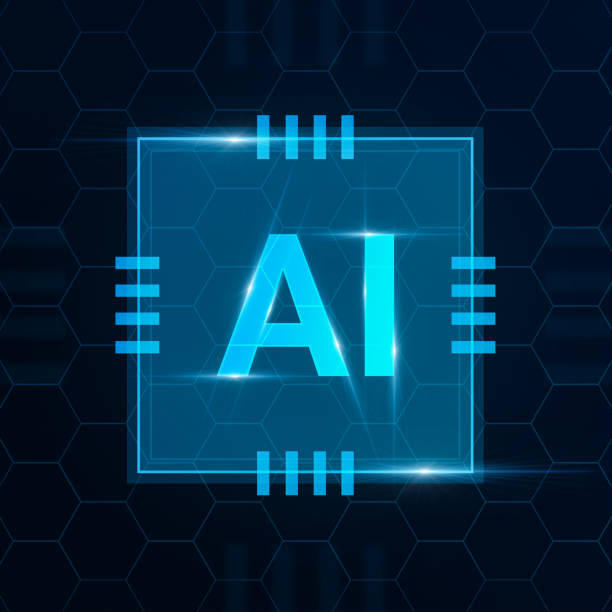
#Neural_Networks are computational models that are inspired by the structure of the human brain.
These networks consist of a large number of nodes (or neurons) that are connected to each other in a layered manner.
Each node receives an input, processes it, and produces an output.
The connections between nodes have weights that indicate the strength of the connection.
Deep Learning is a subset of machine learning that uses neural networks with many layers (deep neural networks) to learn patterns and complex relationships in data.
Deep neural networks are able to learn high-level features from data and can perform very well in a wide range of applications, such as image recognition, natural language processing, and audio generation.
The main components of a neural network include:
- Neurons: Units of information processing in the neural network.
- Weights: Indicate the strength of the connection between neurons.
- Layers: A group of neurons that are connected to each other in parallel.
- Activation Function: A function that determines the output of a neuron.
The learning process in neural networks is that the network is trained using training data.
During training, the weights of the connections between neurons are adjusted so that the network can predict the correct outputs for new inputs.
In short, deep learning allows neural networks to learn more complex and abstract patterns in data.
Neural networks and deep learning are currently used in many artificial intelligence applications and have shown very good performance.
These techniques are particularly effective in areas that require processing complex and large amounts of data, such as image recognition and natural language processing.
With the advancement of technology and the increase in computing power, neural networks and deep learning are expected to play a more important role in the future of artificial intelligence.
Are you annoyed by losing customers due to the old appearance or slow speed of your online store? The expert Rasaweb team solves these problems by designing a professional online store!
✅ Increase customer trust and brand credibility
✅ Amazing speed and excellent user experience
Get a free consultation with Rasaweb right now ⚡
Natural Language Processing: Understanding and Generating Human Language
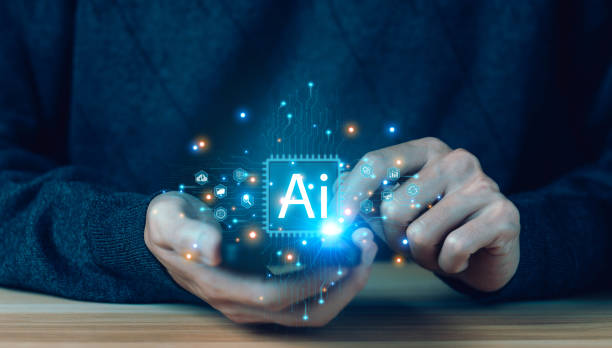
#Natural_Language_Processing (NLP) is a branch of artificial intelligence that enables computers to understand and generate human language.
The main goal of NLP is to create systems that can communicate with humans in natural language and extract information from text, answer questions, translate text, and generate new content.
The main challenges in NLP include:
- Ambiguity: A word or phrase may have different meanings.
- Structural Complexity: The structure of human language is very complex and understanding it requires extensive knowledge of grammar and syntax.
- Noise: Real-world texts often have spelling, grammar, and formatting errors.
- Context: Understanding the meaning of a text requires contextual knowledge.
Some of the important applications of NLP include:
- Machine Translation: Automatic translation of text from one language to another.
- Sentiment Analysis: Detecting the emotions present in a text, such as positive, negative, or neutral.
- Text Summarization: Generating a short summary of a long text.
- Chatbots: Computer programs that can converse with humans in natural language.
- Speech Recognition: Converting speech to text.
- Text Generation: Generating new text based on a specific pattern or topic.
Natural language processing uses various techniques including machine learning, neural networks, and linguistic rules to process and analyze human language.
With the advancement of technology and the increase in the volume of textual data, NLP is advancing rapidly and its applications are expanding.
This field plays an important role in human-computer communication and helps create smarter and more practical systems.
Artificial intelligence is very important in this section.
Ethics in Artificial Intelligence: Challenges and Considerations
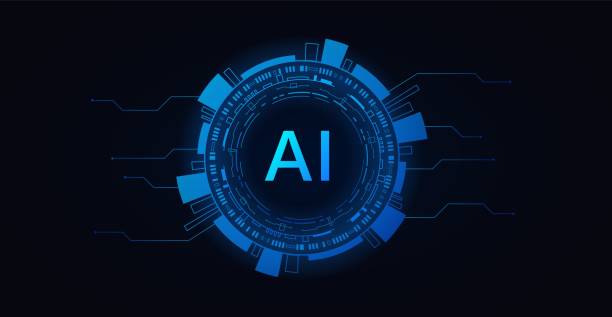
The development and use of artificial intelligence (AI) is accompanied by numerous ethical challenges.
These challenges include issues such as discrimination, privacy, accountability, and security.
With the increasing advancement of artificial intelligence, it is necessary to seriously address these challenges and provide solutions to them.
Some of the most important ethical challenges in artificial intelligence include:
- Bias: Artificial intelligence algorithms can learn and reproduce biases present in training data.
This can lead to unfair and discriminatory decisions. - Privacy: Artificial intelligence systems often require large amounts of personal data to function properly.
This can create concerns about the privacy of individuals. - Accountability: When an artificial intelligence system makes a mistake, it is difficult to determine who is responsible.
- Security: Artificial intelligence systems can be attacked and used for malicious purposes.
- Transparency: Decision-making by artificial intelligence is complex, and it is difficult to understand how these decisions are made.
To address these challenges, researchers, policymakers, and developers of artificial intelligence must work together to develop ethical principles and guidelines that ensure the responsible and safe use of artificial intelligence.
These principles should include things like transparency, accountability, fairness, and respect for privacy.
Let’s develop artificial intelligence with full awareness.
Also, artificial intelligence systems need to be designed to be reliable and safe, and to be used for benevolent purposes.
Given the high potential of artificial intelligence to improve human lives, addressing its ethical challenges is essential.
By adhering to ethical principles and using artificial intelligence responsibly, we can benefit from its advantages and avoid its potential risks.
In general, artificial intelligence should be used as a powerful tool to serve humans, not against them.
The Future of Artificial Intelligence: Visions and Possibilities

The future of artificial intelligence (AI) is very bright and full of potential.
With the ever-increasing advancement of technology, artificial intelligence is changing and transforming rapidly and is expected to play a much more important role in our lives in the future.
Among the most important visions and possibilities in the future of artificial intelligence are:
- Expansion of Applications: In the future, artificial intelligence will have wider applications in various fields such as medicine, education, transportation, manufacturing, customer service, etc.
- Development of Strong Artificial Intelligence: In the future, we may see the development of strong artificial intelligence that is capable of performing any task that a human can perform.
- More Automation: Artificial intelligence can automate many repetitive and routine tasks, which can lead to increased productivity and reduced costs.
- Greater Personalization: Artificial intelligence can provide a personalized user experience, so that each individual can receive services and information that are specifically designed for them.
- Better Decision-Making: By analyzing large and complex data, artificial intelligence can help humans make better and more informed decisions.
However, the development of artificial intelligence also comes with challenges.
Some of these challenges include:
- Ethical Issues: The use of artificial intelligence can create new ethical issues, such as discrimination, privacy, and accountability.
- Impact on Employment: Automation caused by artificial intelligence can lead to job losses in some industries.
- Security: Artificial intelligence systems can be attacked and used for malicious purposes.
In order to benefit from the advantages of artificial intelligence and avoid its potential risks, it is necessary to develop and use this technology with care and planning.
Also, we must keep in mind that artificial intelligence is a tool that should be used to serve humans, not against them.
It is predicted that artificial intelligence will continue to advance at an unprecedented rate in the next decade and dramatically change our lives.
In short, artificial intelligence is an exceptional opportunity to improve human societies.
Table of Predicted Developments in Artificial Intelligence by 2030
| Year | Prediction | Impact |
|---|---|---|
| 2025 | Expanded use of AI in customer service | Improved customer experience, reduced costs |
| 2027 | Self-driving cars in major cities | Reduced accidents, improved traffic |
| 2030 | AI helps humans diagnose diseases | Faster diagnosis, more effective treatment |
Artificial Intelligence Tools for Developers
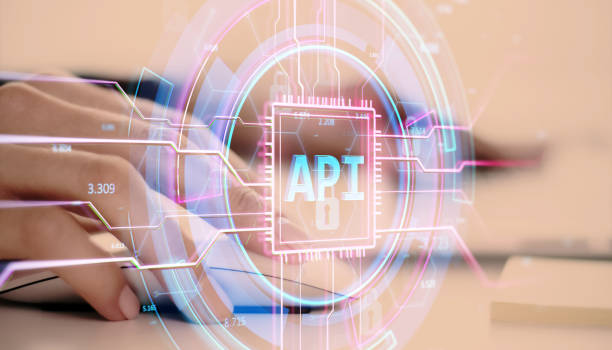
For developers looking to enter the world of artificial intelligence, there is a set of tools and frameworks that can facilitate the development process.
These tools include machine learning libraries, natural language processing frameworks, and cloud-based development platforms.
Some of the most popular artificial intelligence tools for developers are:
- TensorFlow: An open-source machine learning library developed by Google.
TensorFlow allows developers to quickly and easily create and train machine learning models. - PyTorch: Another open-source machine learning library developed by Facebook.
PyTorch is popular among researchers and developers because of its flexibility and ease of use. - Keras: A high-level interface for TensorFlow and other machine learning libraries.
Keras allows developers to create machine learning models using a simple and intuitive API. - Scikit-learn: An open-source machine learning library that includes a set of machine learning algorithms and model evaluation tools.
- NLTK: A natural language processing library that includes a set of tools and resources for processing and analyzing text.
- SpaCy: A natural language processing library designed for speed and efficiency.
SpaCy is suitable for applications such as named entity recognition, syntactic parsing, and dependency analysis.
In addition to these tools, there are also cloud-based development platforms that allow developers to access powerful computing resources and machine learning tools.
Some of these platforms include:
- Google Cloud AI Platform: A cloud-based platform that includes a set of tools and services for developing and deploying machine learning models.
- Amazon SageMaker: A cloud-based platform that allows developers to quickly and easily create, train, and deploy machine learning models.
- Microsoft Azure Machine Learning: A cloud-based platform that includes a set of tools and services for developing and deploying machine learning models.
Using these tools and platforms, developers can quickly and easily create and deploy artificial intelligence models and benefit from this technology in various applications.
These tools help developers make the best use of artificial intelligence in their projects.
Are you worried about the low conversion rate of your online store and not getting the sales you want?
Rasaweb is your specialized solution for having a successful online store.
✅ Significant increase in conversion rate and sales
✅ Professional and user-friendly design to attract customer satisfaction
⚡ Are you ready to transform online sales? Get a free consultation!
Artificial Intelligence in Everyday Life: Practical Examples

Artificial intelligence (AI) is no longer an abstract concept, but is increasingly penetrating our daily lives.
From the time we wake up in the morning with our smartphone until we watch a movie at night, artificial intelligence helps us in various ways and makes our lives easier and more efficient.
Some practical examples of artificial intelligence in everyday life include:
- Voice Assistants: Voice assistants such as Siri, Google Assistant, and Alexa use artificial intelligence to understand voice commands and answer questions.
- Recommenders: Recommender systems on movie and music streaming platforms, online stores, and social networks use artificial intelligence to suggest content and products that we are likely to be interested in.
- Spam Filters: Spam filters in email use artificial intelligence to detect and remove unwanted emails.
- Facial Recognition: Facial recognition in smartphones and security cameras uses artificial intelligence to identify individuals.
- Machine Translation: Machine translation in translation applications and websites uses artificial intelligence to translate text from one language to another.
- Self-Driving Cars: Self-driving cars use artificial intelligence to drive without human intervention.
- Chatbots: Chatbots on websites and messaging applications use artificial intelligence to answer questions and provide customer service.
These are just a few examples of the applications of artificial intelligence in everyday life.
With the advancement of technology, artificial intelligence is expected to play an even more prominent role in our lives and help us in various tasks.
Artificial intelligence is rapidly becoming an integral part of our daily lives and its effects are increasingly visible.
Artificial intelligence shapes our future.
Job Opportunities Related to Artificial Intelligence

With the increasing expansion of artificial intelligence, numerous job opportunities have been created in this field.
The demand for artificial intelligence specialists is increasing and this trend is expected to continue in the coming years.
If you are looking for a high-paying and challenging job, artificial intelligence can be an excellent choice.
Some of the jobs related to artificial intelligence include:
- Machine Learning Engineer: Machine learning engineers design, develop, and implement machine learning algorithms.
- Data Scientist: Data scientists collect, analyze, and interpret data and use it to solve business problems.
- Natural Language Processing Engineer: Natural language processing engineers develop systems that can understand and generate human language.
- Robotics Specialist: Robotics specialists design, develop, and maintain robots.
- Artificial Intelligence Researcher: Artificial intelligence researchers are developing new artificial intelligence algorithms and techniques.
- Artificial Intelligence Consultant: Artificial intelligence consultants help companies use artificial intelligence to improve their business.
To enter these jobs, you need to have a relevant degree (such as computer science, statistics, or mathematics) as well as strong technical skills in machine learning, natural language processing, and programming.
In addition, soft skills such as problem-solving, critical thinking, and communication are also very important.
Artificial intelligence is a growing field and there are numerous job opportunities in it.
If you are interested in this field, you can find a high-paying and challenging job in this field by acquiring the necessary skills.
With hard work in this field, you can reach high ranks.
Artificial intelligence is a high-yielding job in the recent century.
Frequently Asked Questions
| Question | Answer |
|---|---|
| What is artificial intelligence? | It is a simulation of human intelligence in machines programmed to think like humans and mimic their actions. |
| What are the main branches of artificial intelligence? | They include machine learning, deep learning, natural language processing, computer vision, and robotics. |
| What is Machine Learning? | It is a branch of artificial intelligence that focuses on enabling systems to learn from data and identify patterns without explicit programming. |
| Mention examples of artificial intelligence applications in our daily lives. | Voice assistants (such as Siri and Alexa), recommendation systems on Netflix and Amazon, self-driving cars, and facial recognition programs. |
| What is Deep Learning? | It is a subset of machine learning that uses artificial neural networks of multiple (deep) layers to process large amounts of data. |
| What is Natural Language Processing (NLP)? | It is a branch of artificial intelligence that focuses on enabling computers to understand, interpret, and generate human language. |
| What are some of the ethical concerns related to artificial intelligence? | They include bias in data, privacy, job loss, and accountability in case of errors. |
| What are the main benefits of artificial intelligence? | Increased efficiency, improved decision-making, automation of repetitive tasks, and discovery of complex patterns in data. |
| How is artificial intelligence used in healthcare? | In diagnosing diseases, discovering drugs, analyzing medical images, and providing personalized care for patients. |
| How do you see the future of artificial intelligence? | It is expected to continue to evolve at a rapid pace, affecting all aspects of human life, from industry to education and entertainment. |
And other services of Rasa Web Advertising Agency in the field of advertising
Intelligent custom software: A fast and efficient solution to increase click-through rates by focusing on the use of real data.
Intelligent digital branding: Transform campaign management by helping optimize key pages.
Intelligent advertising campaign: Professional optimization to increase site visits using proprietary programming.
Intelligent conversion rate optimization: Revolutionize SEO ranking improvement with proprietary programming.
Intelligent conversion rate optimization: An innovative platform for improving campaign management with Google Ads management.
And more than a hundred other services in the field of internet advertising, advertising consulting and organizational solutions
Internet Advertising | Advertising Strategy | Report Advertising
Resources
What is artificial intelligence and what are its applications?
,Artificial Intelligence Training – Introductory
,What is artificial intelligence? Definition, applications and future of artificial intelligence
,What is artificial intelligence? Comprehensive introduction of artificial intelligence and its applications
? For a big leap in your business and reaching the peak of success, Rasaweb Digital Marketing Agency is with you with its specialized services. Have a powerful online presence right now with fast website design.
📍 Tehran, Mirdamad Street, next to the Central Bank, South Kazerun Alley, Ramin Alley No. 6
“`

